~
By Jim Boyce
Given the fatigue from a week of insomnia, the struggle to nail down attendance figures, and the frustration of getting to central Beijing through traffic late on a Friday afternoon, I was in low spirits before hosting a recent tasting of nine Chinese wines at restaurant Capital M.
Then a few things happened. (I mean, besides realizing any problems related to wine tasting pale ever-so-slightly versus those concerning, say, global warming or world peace.)
First, the chipper staff at Capital M had the room well-prepared and professionally handled all last-minute duties. Second, a pair of double espressos provided by said staff relieved my sleep deprivation-induced zombie-like state. Third, the combination of wines turned out to be far better than expected.
I picked the nine wines because I think each has merits. What I liked most was how they worked together. Love them or not, they stood on the good side of The Line ‘Drinkable’ and we had lots to discuss. And it was fun to see, after each flight of three, every wine get votes as favorite.
An event like this showed how we can move past “Can China make good wine?” (a tasting where people like one or two bottles but easily dismiss the rest) to “What’s the best wine in China?” (a tasting where people see positives in all or most wines and talk about relative merits).
I say “tasting like this” since the better wines still represent but a case or two at most in the barrel of production and their prices tend to be higher than imported wines of the same quality. Even so, “what’s best?” discussions can be fun and I think this tasting turned out to be useful.
Before I get to the wines, kudos to owner Michelle Garnaut and the staff at Capital M. To Hans Qu, who after each flight talked about the wines from his perspective as a sommelier. And last, but not least, to those that provided bottles, including 1421, Changyu Moser XV, China Wines and Spirits, Great River Hill, Pernod Ricard and The Wine Republic — I appreciate your faith in me fairly presenting your wines.
Here is my take on those wines, with bracketed info on distributors and where to get the bottles via restaurants and bars or via retail.
Flight 1: White Wines
1421 ‘Silver’ Chardonnay 2010 (Xinjiang): Our lowest-priced wine received kudos for being easy to drink. A simple and fairly lean wine — with stone fruit and citrus characteristics — that some favorably compare to Chablis. (Restaurants & bars: Mokihi, Punjabi, Scarlett in Hotel G / Retail: TRB Cellars, rmb88 + delivery fee for small orders)
Domaine Helan Mountain ‘Special Reserve’ Chardonnay 2011 (Ningxia): Made by Pernod Ricard in years when the grapes merit it (for example, none was produced in 2012). Aged ten months in new French barrels, it shows an astute balance of fruit and oak, with a mouthwatering freshness and enduring finish rare in local white wines. This one ranks among the best Chardonnays yet made here. (Distributor: Pernod Ricard)
Grace Vineyard ‘Tasya’s Reserve’ Chardonnay 2009 (Shanxi): I didn’t find the balance quite as harmonious as with Helan Mountain but, after sniffing and sipping over a few hours, I came to appreciate this one. It had a funky complexity — vanilla, stone fruit, toast, citrus, a touch of caramel and honey, and more — that I can’t pinpoint in words but that had me going back for extra sips to try and do so. I reckon that with another bottle or two, I will work it out. (Restaurants & bars: Temple Restaurant Beijing / Retail: Everwines, rmb199 / Distributor: Torres)
Qu stressed how differently these three wines expressed Chardonnay. I also liked the different scenarios in which I imagined myself enjoying them. For the 1421, it might be a chilled six-pack in a boat on a hot July afternoon. For that well-balanced Helan Mountain, it seems like a go-to gift for a birthday or going-away party since it would please most anyone. And the Tasya’s Reserve? That’s a bottle I’d savor for a few hours with a close friend, although, based on past experience, I’d lean toward the 2010.
Flight 2: Value Reds
Chateau Hansen ‘Cabernet Gernischt’ 2011 (Ningxia): In past tastings, this has tended to be a “love it or hate it” entry. It reminds me of dozens, if not hundreds, of Chinese wines that have a light red fruit / slight confection smell and then disappoint with a body too thin and dry. The difference? The texture here is far more enticing and the fruit far more abundant, taking the wine from innocuous to pleasant and seemingly reflecting the vineyard in a way that seems to elude others. Interesting. (Restaurants & bars: Chez Julien / Retail: The Loop, rmb128 / Distributor: China Wines and Spirits)
Great River Hill ‘Chateau Nine Peaks’ Cabernet Sauvignon 2011 (Shandong): This is full-bodied and flavorful for a young Shandong wine, with sweet ripe fruit up front and spiciness and oak that seemed especially powerful after the Hansen. Quite a few people picked it as the favorite of the flight. And why not? It delivers punch in terms of aroma, taste and structure. I’d like to drink a few bottles of this during a BBQ. (Restaurants & bars: Temple Restaurant Beijing / Distributor: Great River Hill is working to find a distributor and this wine will likely retail at less than rmb150)
Grace Vineyard ‘People’s Series” Cabernet Sauvignon 2011 (Ningxia): From the Ningxia vineyard of Shanxi-based Grace, this one is reasonably smooth and fruity, with quite a bit of black pepper flavor at the finish. In terms of taste, I found it less interesting than the other two wines on this night, but easy to drink and, with that label, it will no doubt prove popular as a gift. (Retail: Everwines, rmb99 / Distributor: Torres)
On this night, I grabbed that bottle of Hansen when we headed to dinner.
Flight 3: Top Reds
The staff at Capital M decanted all three wines for 90 minutes.
Silver Heights ‘The Summit’ 2011 (Ningxia): The first whiff sucked in people — we heard descriptions that ranged from dark cherries to oak to violets to tobacco — and I could see noses dip in and out of the glass as more smells emerged. I’ve described Silver Heights as having “personality” or being “moody” and this bottle didn’t disappoint. I found something intriguing about this wine, with its luxurious — silky? — texture and shifting character. It received a lot of votes and, from what I could see, was the first to run out. (Restaurants & bars: Grill 79 / Retail: Everwines, rmb506 / Distributor: Torres)
Helan Qing Xue ‘Jia Bei Lan’ 2009 (Ningxia): This wine won a Decanter ‘international award’ in 2009 and also received kudos from tasters. It had ample but restrained dark fruit and spice aromas, with more pronounced oak than the other two wines in this flight, and might have benefited from even more aeration. I’ve tasted Jia Bei Lan 2009 a lot, I’d guess more than two dozen times, and found it can vary. But the last handful of bottles have shown consistency and suggest a wine with good years ahead. (Restaurants & bars: Morton’s, Park Hyatt, Raffles / Distributor: The Wine Republic, rmb898)
Moser Changyu XV (Ningxia): Several people kept coming back to this wine, describing it as “fresh” and “smooth”. This is a ably made Cabernet-Merlot that — at 12.5 percent alcohol — doesn’t knock off your socks or make you so tipsy you can’t remove them later on your own. It has a pleasant texture, good fruit concentration and has received kudos from leading wine writers. Expect to hear more about this one. (Distributor: Changyu / Retail: I saw it for rmb1288 at Changyu AFIP, I’ll check for a source in central Beijing.)
Overall, a fun night. At least to me, each flight allowed for interesting contrasts and comparisons, whether the expression of fruit in the Chardonnays, the body weight in the value reds, or the complexity of the top reds. And, given an entry fee of rmb138 for wines that would have cost over rmb2500 to buy on their own, I think we delivered value for money. The question now is which wines wine the attendees go on to buy.
Note: I’m working on a fuller list of venues at which to get these wines. Also, if you are interested in China’s wine scene, I write a free newsletter called GWoC Talk. Click here for a sample. Click here to join. Follow Grape Wall on Twitter here.
Grape Wall has no sponsors of advertisers: if you find the content and projects like World Marselan Day worthwhile, please help cover the costs via PayPal, WeChat or Alipay.
Sign up for the free Grape Wall newsletter here. Follow Grape Wall on LinkedIn, Instagram, Facebook and Twitter. And contact Grape Wall via grapewallofchina (at) gmail.com.

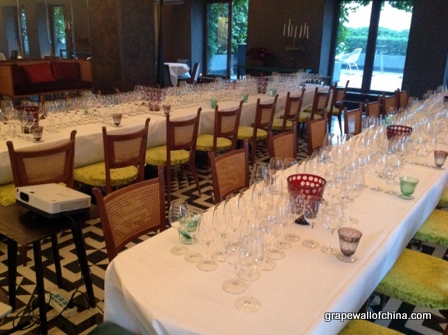
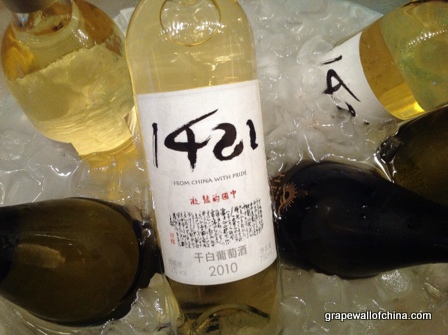
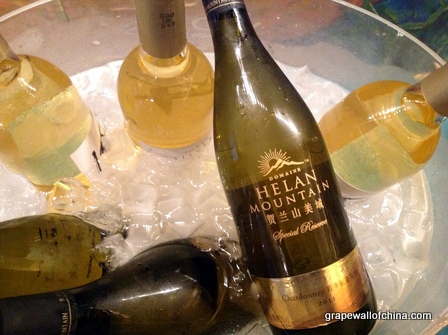
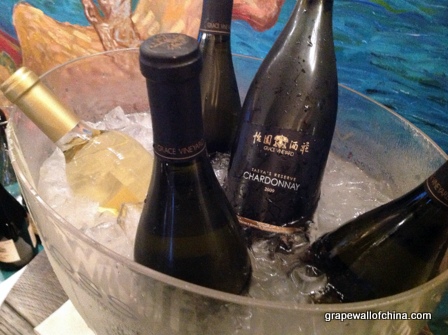
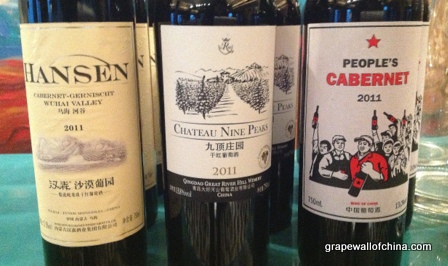
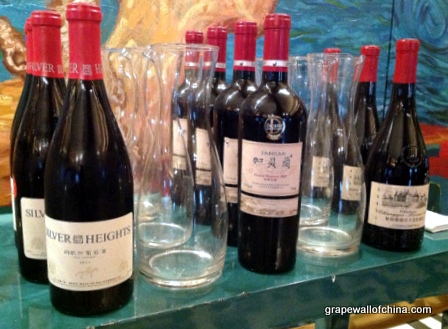
Leave a Reply
You must be logged in to post a comment.